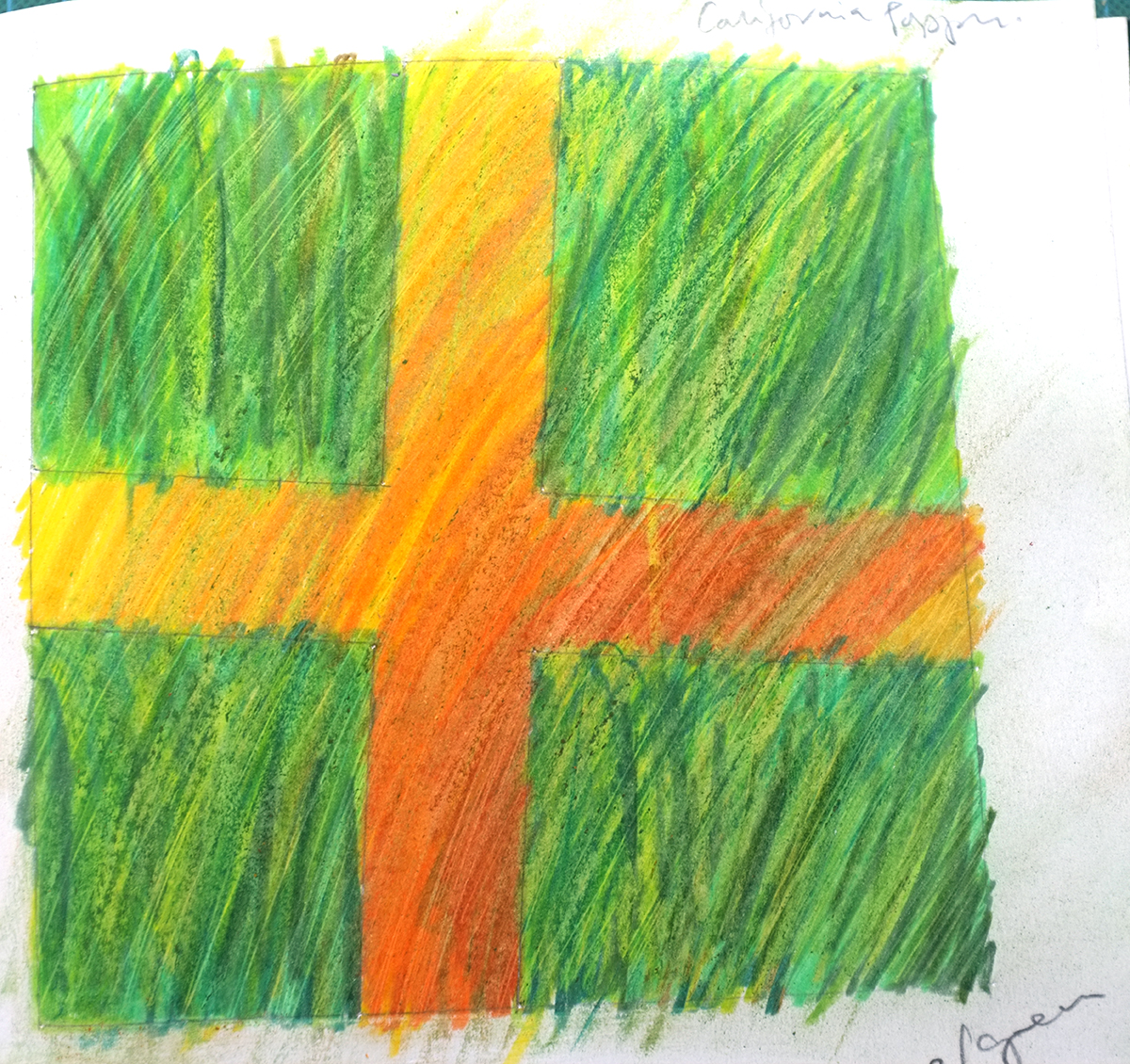Henry Miller wrote ‘To Paint is to Love Again’ (Cambria Book s published by William Webb in California in 1960). It is a book title that has engraved itself on my mind, and today looking at the progress in the studio I felt the first return of the joy I remember of creating paintings when I was a full time artist in my younger years. It has taken a while to get into this groove again, but looking around the growing amount of work I have on easels and walls in the studio I began to feel the familiar tingle of excitement of ideas, colour and textures mixing and developing.
I enjoyed 25 years running a design practice, but design, certainly the design of hotels which I was involved with (and for which we won awards) is a collaborative process. As a painter all the decisions are mine. Starting the canvas this week has reminded me just how many decisions an artist makes as a part of the process of creation.

Drawings look at bits of the colour and textures to be used. I’ve done about 20, some a metre square, to get this far. This is grass – and relates only through colour and the mark
Everything from the size and scale of the canvas to the size and scale of the marks made, thousands of decisions an hour being made, some consciously, some unconsciously by instinct and experience, makes the process a complicated yet simple one. The process is complicated because of the wealth of considerations before starting, simple because one decision leads inexorably to another.
The process is full of feedback loops and as I painted I realised all the drawings had left some questions unanswered so alongside the painting another large drawing is beginning to take shape on which hopefully some of the questions relating to the painting can be explored and feedback into the creation on the canvas. Drawing is the mythmaking process, painting the formal realisation of the personal legends the artist creates. Myths and legends are a part of the human state – from the shared myths of gods from Thor, Zeus and Anubis to modern mysticism and religions, all have modified behaviours.
Artists drawing process is an exploration of their own soul and creation of their own myths, painting being a way of ritualised realisation of these myths. Makes Hurst’s derivative (sub Larry Poons) dots or bejewelled skull (sub Tretchikoff), or Tracy Emin’s unmade bed interesting as reflections of their souls, doesn’t it? For me the drawing is providing a route back into the joy of creation as well as a way of exploring colour and the texture of the mark, its relationship to the movement of the body through gesture, and the relationship to all this of the different media I am using.
There are no prizes for being right or wrong, but the process has no end. I am older but the spirit moves me in the same way, thanks goodness. The process of enquiry, of a dialogue with the self, conscious to unconscious, has not changed.
To paint is an affirmation of life. It is indeed, as Henry Miller wrote, to love again.




